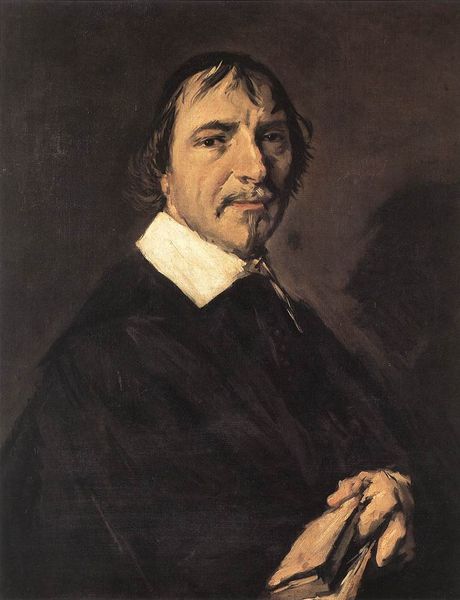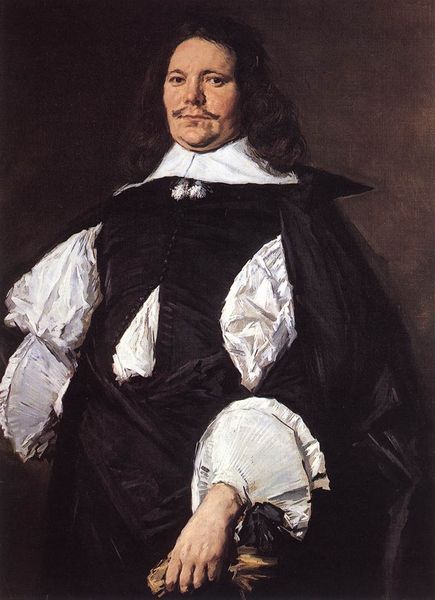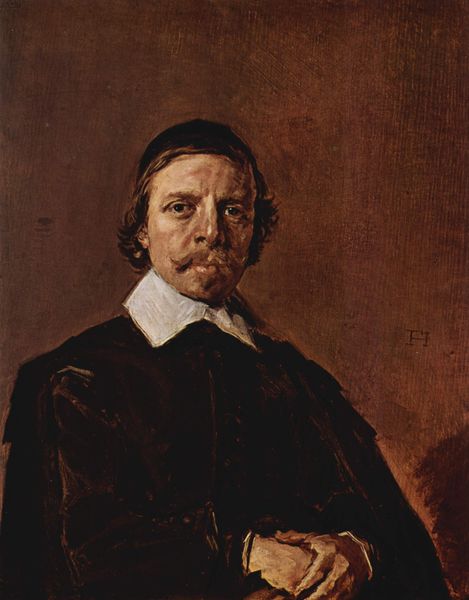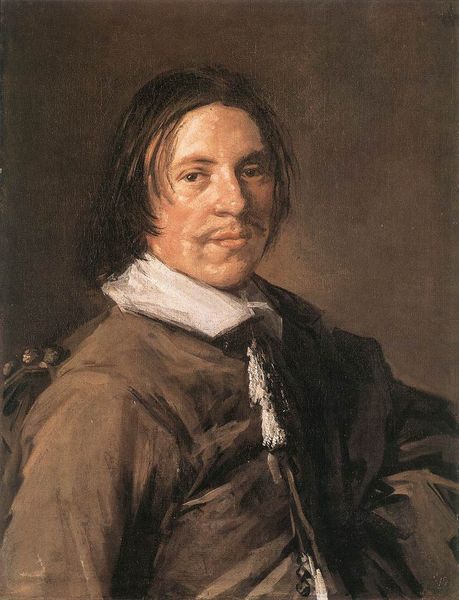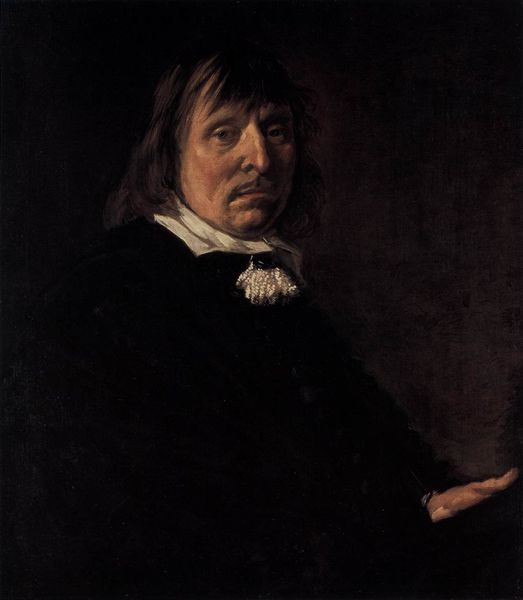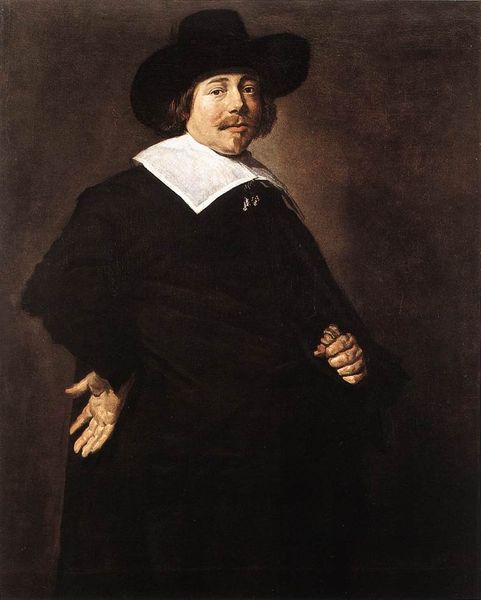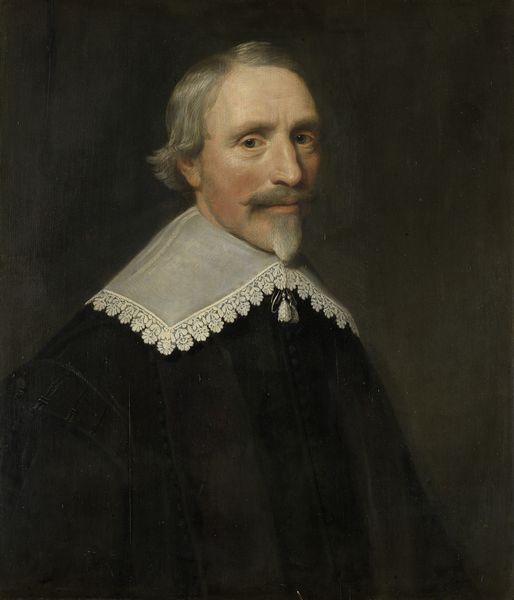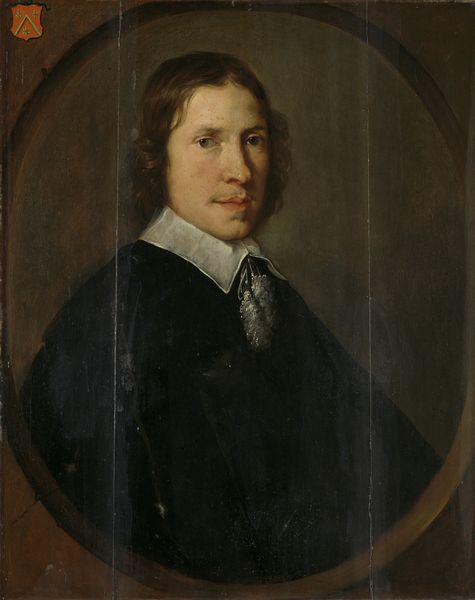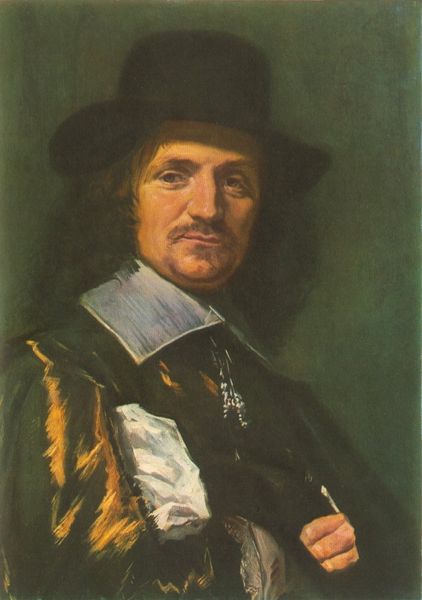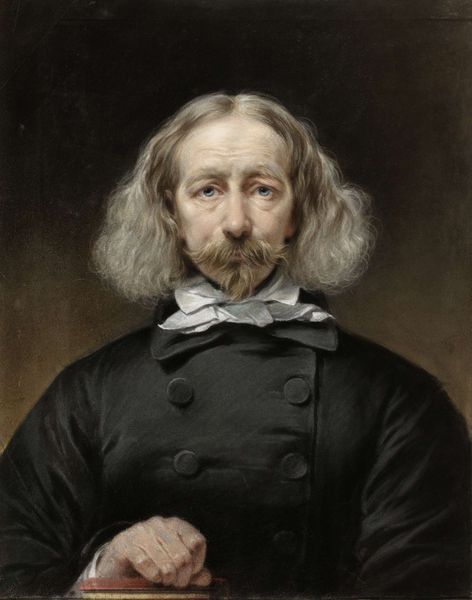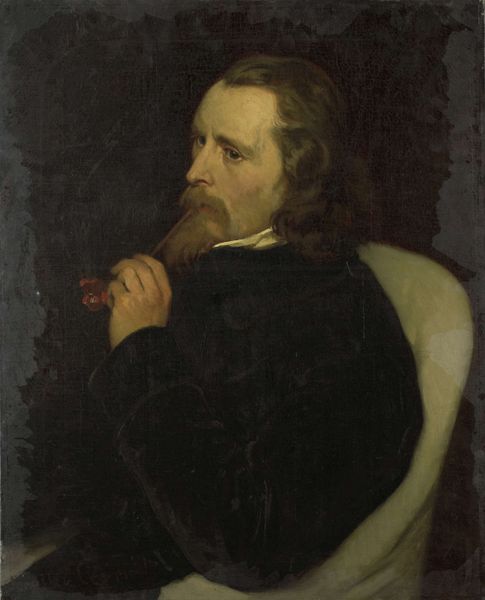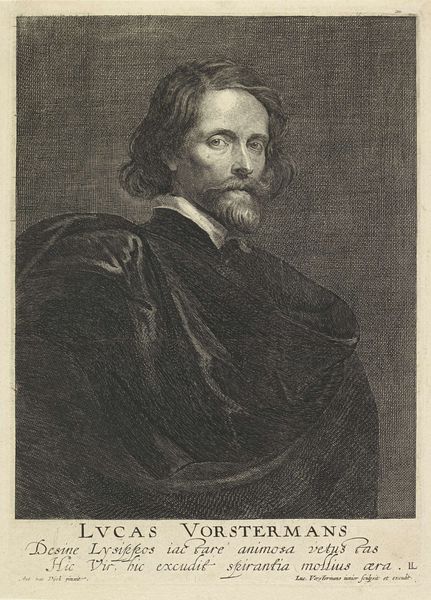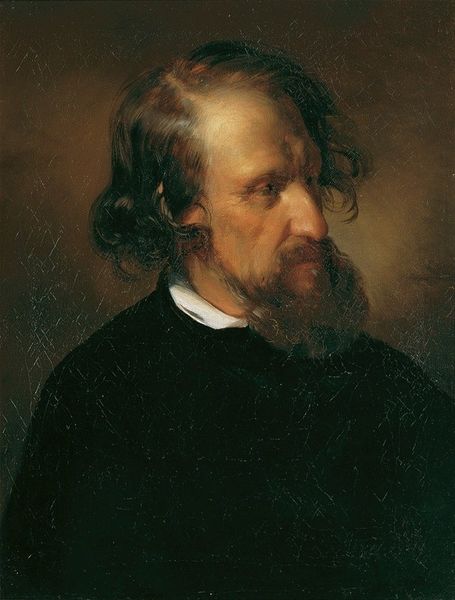
Portrait of a Man 1655
0:00
0:00
franshals
National Gallery of Denmark (Statens Museum for Kunst), Copenhagen, Denmark
oil-paint
#
portrait
#
baroque
#
oil-paint
#
genre-painting
Dimensions: 104 x 84.5 cm
Copyright: Public domain
Curator: Well, the somber atmosphere definitely hits you first. It’s muted but there's something about it. Editor: This is Frans Hals's "Portrait of a Man," crafted in 1655 using oil paint. The work currently resides at the National Gallery of Denmark in Copenhagen. Curator: The hands immediately draw my eye. They’re so tightly clasped, the textile object clutched within them appears almost crumpled, and yet, there's an intense focus on rendering that material accurately with brushstroke and light. Is it silk, perhaps? What was its cost? What statement does that material possession make? Editor: It raises the question of who he was, right? The dark clothing, contrasted with that pristine white collar, positions him in the bourgeois society. The portrait allows us to explore class structures and societal expectations during the Dutch Golden Age, reflecting on access, status, and perhaps even the burden of reputation. Curator: Yes, and the brushwork! It's so characteristic of Hals – that seemingly effortless application of paint to create form. How was Hals perceived by his contemporaries, and how does that perception impact the value assigned to his art, both monetarily and culturally? Editor: We can certainly see a life lived etched onto his face – every wrinkle, every line. It begs consideration for our own biases when regarding older men in positions of power and what expectations or limitations are inherently there. Curator: There's an honesty there, a directness that bypasses idealization in favor of capturing the weight and weariness of a human. Editor: The interplay between light and shadow – chiaroscuro – certainly does amplify those emotions. He's an individual caught in a precise historical and social moment. It allows us to ask pertinent questions about how marginalized groups, in this particular moment of art history, can assert agency and claim representation. Curator: And that representation matters, in the literal layers of paint carefully constructed over time by this master craftsman. Each decision, each manipulation of the materials—all evidence of the labor involved, the time invested in creating this enduring object. Editor: Looking at him I feel connected through our shared experiences, acknowledging his past while confronting present-day inequalities. Curator: It’s that connection— that tangible manifestation of past meeting present—that solidifies art's enduring relevance. Editor: Agreed; his humanity rendered with impressive materiality, bridging centuries.
Comments
No comments
Be the first to comment and join the conversation on the ultimate creative platform.
